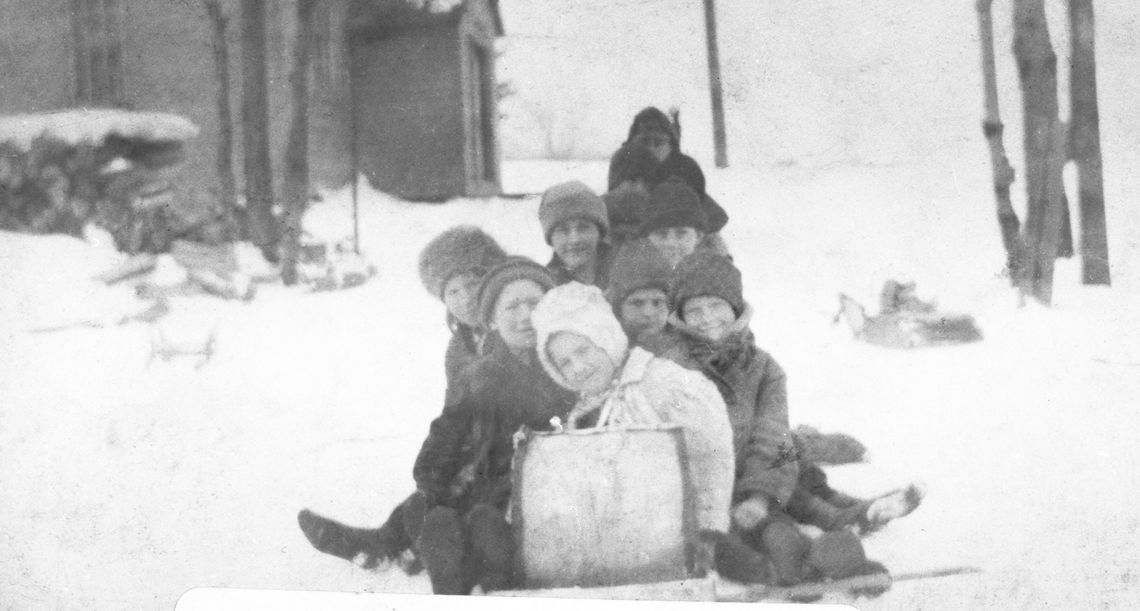This continues a series adapted from the book, “A Port Oneida Collection,” Volume 1 of the twopart set, “Oral History, Photographs, and Maps from the Sleeping Bear Region,” produced by Tom Van Zoeren in partnership with Preserve Historic Sleeping Bear. Here we take a look at the North Unity School, along M-22 on Lake Narada.
The North Unity School was constructed, and began operations, around 1879—part of a system of log schoolhouses in Cleveland Township. Laura Basch (and her father George Olsen) did all their schooling there. Laura went all the way through the eighth grade. To continue beyond that she would have had to find a way to go to Glen Arbor or another town where there was a high school. However, like many at that time, she began working full-time at that point.
Laura walked to and from school, about a mile & a half via shortcuts: “We went across the swamp sometimes to make it closer, if it wasn’t flooded; and if it was flooded, then we had to take the road. And then sometimes we had to walk in water; and we all had cloth overshoes and stuff like that, and it was a cordwood road there [built up by laying down logs as a foundation]. I think some of that cordwood still comes out once in a while. And Richard (Brunson) and I always walked home holding hands. We were always going to get married someday. But he’s long gone . . .
“There was no plowing at that time. I think 1926 was when they started really plowing any roads here. We had to make our own track. I remember I liked school so well that they could hardly keep me home from school. Dad said, ‘Oh, you can’t go,’ and I said, ‘Yes, I’m going to school.’” “We didn’t have snow pants and all that stuff. We had heavy, black, long stockings and maybe some leggings. And I remember one time I got down the road as far as by Haymses’ (the Schmidt Farm), and I couldn’t make it any farther and I didn’t know if I was going to get turned around. Well, I finally did —I was so deep in the snow — and went back home.
“(The teachers) always boarded with the Prauses (at the “Goffar Farm”) because they were the closest ones. I’ve known when (the number of students) was down to 11 and up to 30. (The teacher) had from the kindergarten to eighth grade. She had all those grades . . . We always had to come up to the recitation bench for our lessons. And then we’d go back to our seats afterwards.
“(We studied) the basics. We had Palmer Method. That is one of the greatest things I think there is. I wish it was taught more in the schools today. You had to learn how to write freely. And it was just a good method is all. I don’t know if they use it in the schools anymore or not.
“I had (neighbor) Olive Manney (for a teacher) for many years. And also Laura (Burfiend) Barratt was a couple years. And they were my two best teachers. And I really prize Mrs. Manney the best, because she had the talent to make programs and stuff like that. We put on a school play which was called “School Days,” and I was the teacher in it!
“. . . We had to stay away from the lake. There wasn’t all those trees there then. We had plenty of room to play. And we played Anti-I-Over, and Fox & Geese. That was two of our main playings. And of course, I was a tomboy so I could climb the trees as good as any boy could — I sure could! (Laughs).”
To be continued…








